MMP, Dessins (House of Raw Materials, drawings)
Exhibition at the "Art3" art center, Valence, 11 October - 17 November 2012.
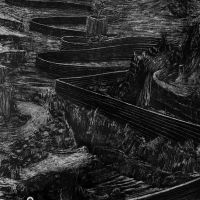
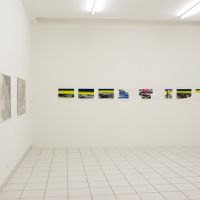
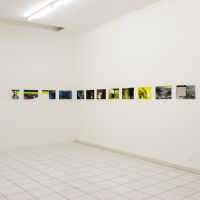
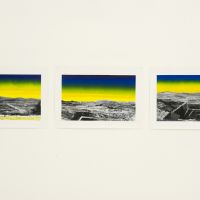
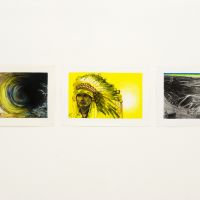
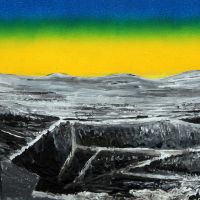
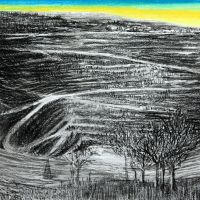
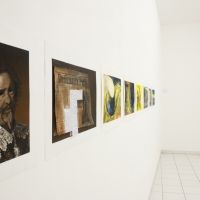
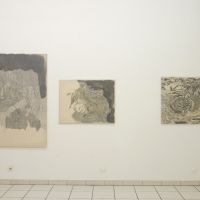
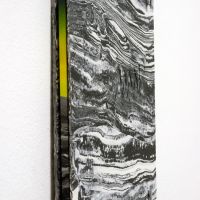
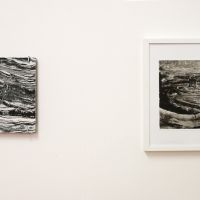
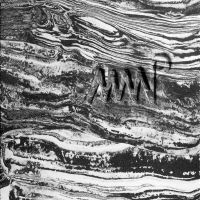
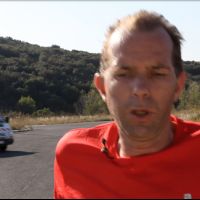
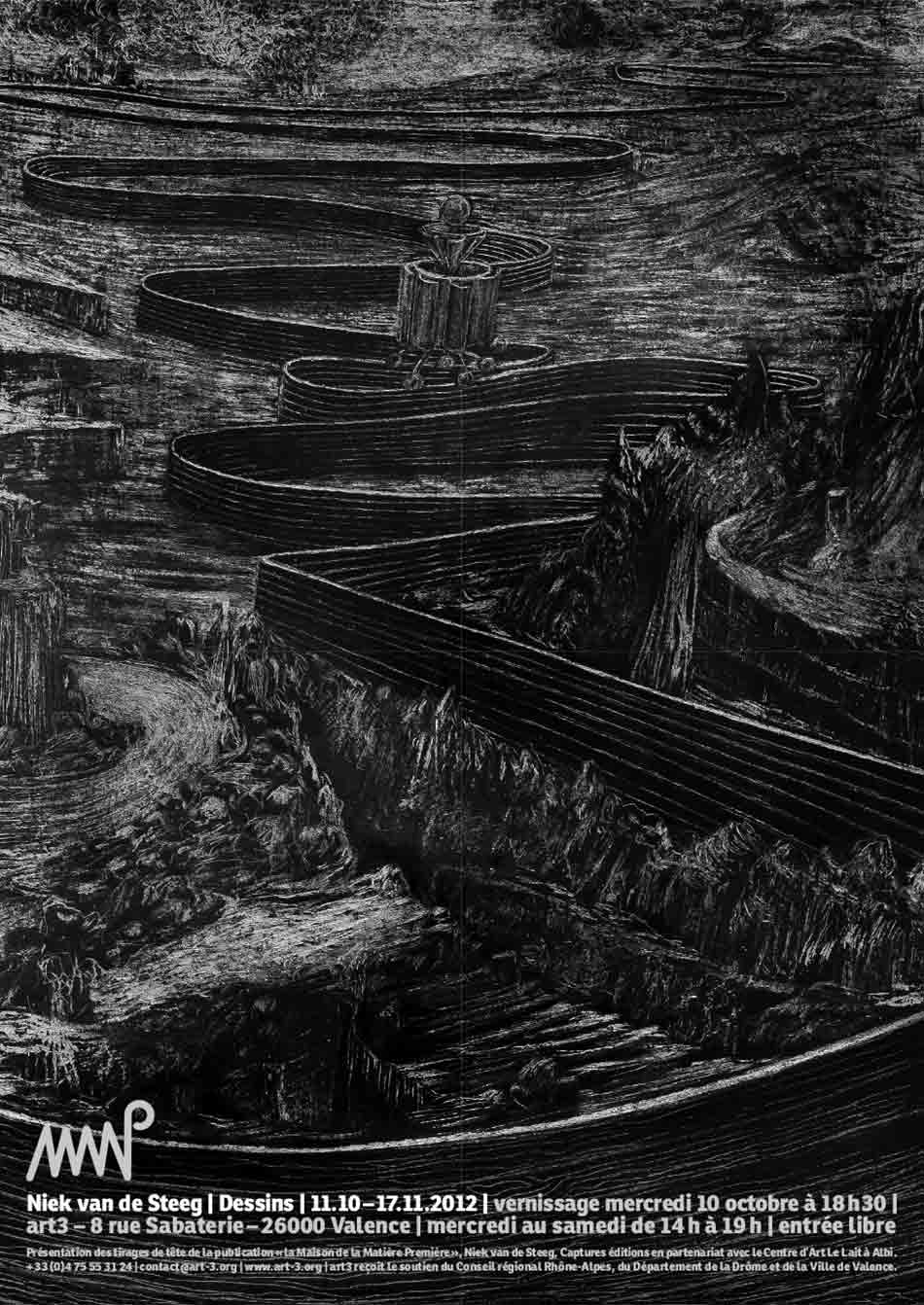
©Thierry Chassepoux, private collections
Directed and curated by Sylvie Vojik.
Poster design by Jocelyne Fracheboud
With the support of the Centre d’art Le LAIT in Albi and the Fonds National d’Arts Graphiques and Plastiques, Paris
Prints from the edition, la Maison de la Matière Première, Niek van de Steeg, Captures éditions in partnership with Centre d’Art Le LAIT, Albi.
The art center Art 3 showed a series of original mixed-media drawings: watercolour, charcoal, acrylic and collage, created for the book MMP (la Maison de la Matière Prémière (The House of the Raw Matter)), and an edition: 36 pages, hardback, stitch bound, glued, final format: 21 x 26 cm. The book was a project for Captures Editions and the Art Center 'le LAIT' in Albi.
One of 15 special editions will been shown at the Art3 art center.
As well as the drawings Niek van de Steeg presneted a video entitled, “Running Matter and Yellow Cake” and a series of black white porcelain paintings on canvas. A short text by Lise Guehenneux introduces the problems and issues at stake in this work.
Since the beginning of the 1990s, Niek van de Steeg has developed works as fragments of reality. They are the centre of his creative process and form the basis of a construction which is each time embodied in an exhibition. After Le Pavilion à vent, and the T.G.A.D. and its various developments, The House of Raw Materials has allowed the artist to question the principle of reality, its exploitation and its networks. What happens before raw materials are distributed, after their various transformations and then put on the market? After examining coffee, Niek van de Steeg has turned to the materials of asbestos and uranium. How does man shape the land in order to extract these raw materials? Symbolic man-made landscapes are born from this exploitation. And it is here that the artist unwinds the thread of a story that comes from the fragmented paths brought to us via documents; from the initial exploitation to the current phase and its future. He uses the close-up, the overview, constructive elements, press articles and portraits to build a structure that serves him as a common thread. The wooden structure, the base and anchoring point of the MMP becomes, in the artist’s drawings, an ensemble built of elements in a jigsaw-like puzzle. We recognize various faces here: figures from history, from sculpture, from painting. The raw material is enriched by the multi-faceted points of view that Niek van de Steeg presents in a vertiginous montage.
Lise Guéhenneux